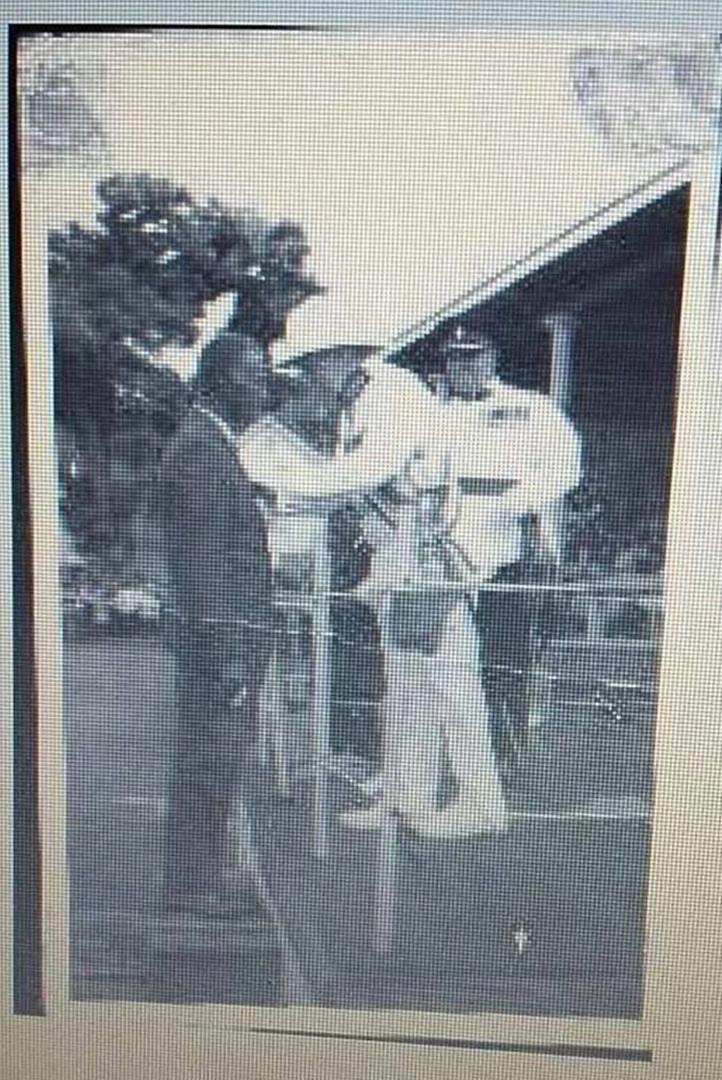Samuel Peters
 Mr. Samuel Peters was the caretaker of the Botanical Gardens from around the mid 1950s to 1968. He took over that position from one Mr. Fraser, and he was succeeded by one Mr. Emmett Doyle.
Mr. Samuel Peters was the caretaker of the Botanical Gardens from around the mid 1950s to 1968. He took over that position from one Mr. Fraser, and he was succeeded by one Mr. Emmett Doyle.
Mr. Samuel Peters took up residence at the Botanical Gardens along with his wife Mrs. Ruth Peters and six children: Janice, Winston, Yvonne, Trevor, Juliette and Ken.
Mr. Peters was known as a serious and very stern caretaker. He commenced his duties very early on mornings, ringing the bell to open the gate at 7:00 a.m., and on evenings the gate was closed at 6:00 p.m. Most of the workers at the gardens originated from Lowmans and Questelles; they travelled to the gardens on foot each morning and they had to leave home very early in the morning without a meal, in order to get to there on time. They were therefore allowed to gather in the round house (gazebo) to have their breakfast.
Mr. Peters made rounds at night, especially on moonlit nights, when he was known to make a tour of the gardens with his flashlight. He is said to have chased out many couples from out of the fruit trees – after hours rendezvous at the Botanical Gardens were thwarted under his careful watch.
Mr. Peters was driven by a desire to keep the Botanical Gardens beautiful at all times; it was the pride and joy of his heart. During his time as caretaker, the Botanical Gardens were very well maintained, with special focus on beautifying the gardens with very rare and beautiful flowers of all kinds. The centre walkway of the Botanical Gardens was lined with a variety of hibiscus, backed by ixoras and palm trees; the hibiscus was the highlight.
There was also a very wide variety of fruit trees, including, tangarine, mango, dunks plum, hog plum, governor plum, bell apple, gub, mangostene, mamsipote, cherry, damsol, sweet tamarind, velvet tamarind, date palm, almond. Some of the fruit trees in the gardens at that time were very exotic and are not well known today. Other trees that were of particular attraction were the comb and brush tree, the rubber trees, the Captain Bligh breadfruit tree and the lovely palms. The nutmeg tree was also a highlight.
Mr. Peters was very strict about the lawn and any child found scampering through the lawns was sure to receive a beating without fear or favour; not even his own children were allowed to pick the fruits and flowers in the gardens, the nursery where plants were propagated was completely out of bounds, and they certainly were not exempt from punishment if caught transgressing.
Quite naturally, the expectation of punishment did not prevent his children from taking the opportunity, when he was attending to other areas of the Botanical Gardens, to help themselves to the various fruit trees as they knew where he was likely to be at a particular time, and they used that information to their advantage. However, they had to ensure that tactics were in place in the event that he caught them by surprise, as he was known to patrol the gardens with his eyes always in the fruit trees looking out for unsuspecting children.
Mr. Peters’ children recall times when they used to climb the fruit trees, unbeknown to him. At times when they saw him approaching from a distance, they would jump down from the tree quickly, run and hide from his view, but if there was not enough time for them to escape without him discovering their mischief, they would be constrained to keep extremely quiet in the tree, trying to blend in with the leaves. Another tactic that the children developed was to disguise the scent of the tangarine, by eating mangoes after devouring the tangarine; the scent of the tangarine was easily detectable by Mr. Peters, who would take measures such as smelling his children’s clothers to ascertain whether they had been disobeying his rules. In spite of their schemes, they were caught red-handed on many occasions, and it seemed as if he had an instinct, a sixth sense of knowing when children were up to mischief in the gardens. When caught in the act, Mr. Peters certainly did not spare the rod, and would warn them time and time again not to pick the fruits; they were only allowed to eat fruits that he brought home for them.
His children also recall their attraction to the ponds which were always very well kept and beautiful. There were lots of fishes in the pond, and children would often go into the pond to catch fish, but they dare not get caught by Mr. Peters for punishment would be sure.
The stud centre, where the male animals such as cattle, were kept was another place of attraction for children whenever persons would bring the female animals there to breed. The viewing of the mating process, however, had to be a clandestine activity for if caught “peeping” they were sure to get some good “licks”.
The beauty and splendour of the Botanical Gardens attracted tourists in droves; the children sometimes acted as “unofficial” tour guides and were always happy to receive their tips, which they had to keep secret from Mr. Peters for fear of chastisement. Locals also came to the gardens in their numbers, especially on Sunday afternoons after Sunday school. It was also a very popular place for the taking of wedding pictures and was also used by students as a place of study.
Mr. Peters received an award for his work at the Botanical Gardens on one of the visits of Queen Elizabeth II to St. Vincent and the Grenadines.
Written by: Mandella R. Campbell (grand-daughter of Samuel Peters)
Contributors: Yvonne Williams (nee Peters), Juliette Campbell (nee Peters), Ken Peters and Janice Joseph (nee Peters) (children of Samuel Peters)



